Falla’s Homenaje pour le Tombeau de Claude Debussy
A Master Lesson with Rey de la Torre, taped in the form of a conversation with Walter Spalding, Sept.’76:
WALTER SPALDING: Could you tell me how the “Homenaje” came into being?
REY DE LA TORRE: The facts are that it was written for the Debussy number of “Revue Musicale”, which requested it. The editor invited Falla to send something “pour le tombeau de Claude Debussy” and requested compositions from 6 or 7 other leading composers of the world. At that time Falla was in contact with Llobet, and Llobet suggested the possibility of doing that homage for guitar.
WS: I know Debussy died in 1918 – how soon was the “Homenaje” commissioned?
RdlT: According to J.B. Trend, in the autumn of 1920. In several editions there might be the date. Not in this one but I think that it was written in 1920. So Falla agreed to try and he started to work on it. I don’t know to what extent he worked by himself and then joined Llobet, and they worked together. It was a combined effort over quite a few days. He knew the guitar well, but for some of the idiomatic things he consulted Llobet.
WS: Had Llobet worked with Falla before?
RdlT: Not that I know, no. Not on any specific piece.
WS: They must have known each other.
RdlT: Oh yes, they knew each other. And they were good friends. That’s the time Llobet had met Debussy and Ravel.
WS: In Paris?
RdlT: Yes, and Falla had a great admiration for Llobet as a musician, and as a person. As you know, Falla was very strict in his ethical view of people. Besides being talented, they would have to have what he would think a minimum of morals, ethical attitude towards the world, towards God and religion and so forth. Though Llobet was not specifically a mystic or deeply religious, he was not anticlerical or antichurch, and he was very ethical himself in his relations to family, friends, and colleagues. He was probably one of the most ethical persons I know in that relationship. In his criticisms he would tend to emphasize the good and minimize whatever was lacking.
In any case, the chronological sequence of the creation of this piece is in the correspondence between Llobet and Falla, which is in the possession of the sister of Falla. At one point when the piece was practically finished they happened to meet in Granada at the house of the Garcia Lorca family. (This I heard from the brother of Federico, Francisco.) They had these gatherings there, all kinds of artists, writers, etc., and Llobet and Falla were there and got together in a little room and started working. By this time the piece was almost finished, and the work had to do with final dynamic changes — indications.
As you know, Falla was very precise, almost pathologically concerned with details. Whether it was an orchestral work or a post card, he was very very precise. And the one thing that was humorous, was that if you could hear Llobet and Falla in that room from the very beginning; for the fa, mi, fa, mi,fa, mi, fa, Falla writes piano. The chord can end forte. It wasn’t so much the volume as the weight in it that he wanted, and he would call him by the first name, he said, “No Miguel, I want more…. it’s not enough”, and Llobet would do it. They spent half an hour on that first bar and finally got together on it.
The piece, as you know, is strange…. there is a dichotomy, a strange combination of factors, because it’s a dirge, an elegy type of thing. Supposedly a sad thing, dedicated to the “Tombeau”, his grave; but on the other hand, there is the habanera rhythm which is not sad – it was considered almost lascivious at the time. so the combination of this funereal feeling and the Habanera together, is very strange. It’s not a chordal thing- the traditional funeral march where the whole feeling is very heavy and almost arrhythmic. There is the contradiction of the rhythm itself, the Habanera, combined with the feeling of grief. And this is, irrespective of the notes, and literal reading of the score-(which is quite an achievement if you do exactly what’s in there, every note has an indication, dynamically, phrasing, it’s almost impossible to find a note that doesn’t have a specific indication from Falla.) Some people think it’s overscored. I don’t think so, I just think he didn’t trust the interpreters, and the more he put in, he thought, the closer it would be to what he wanted.
The main problem in performing this piece is to understand besides the music itself, this duality of sad music and the rhythm that is not especially sad. If this is not understood as an overall thing, the thing that transcends the music itself, no matter how clean or how perfect notewise, how much you follow the indications, you really cannot convey the feeling that you find in music with an ethnic element involved. Whether it’s a Viennese waltz, a funeral march, or a Hungarian czardas, or a flamenco bulerias, there is an element that is not strictly musical, call it national, or what Miguel used to call “natural” music, it’s not popular, it’s natural. That element which is not musical in itself is almost unattainable unless you have such a determination in trying to understand the nonmusical aspect in this music — you will never do it. And if this dichotomy, this duality, the contradictory factors are not understood then the intensity of the work is lost; the intensity of the feeling is that clash. This to me is the essence of the piece. Whether it is played on the guitar, or in the piano version which Falla reworked, or the orchestration which is part of the “Homenaje” — if this is not understood, 50% of the thing is gone. And that is what is to me most important. This is why the piece is so historical and why it occupies a very special place in the literature of the guitar.
As far as the “guitarization”, (I mean to render it into truly guitar music,) this was done with the help of Llobet. Falla was a guitarist even if he couldn’t pluck a single string – his music is all conceptually guitaristic. As you know, this is shown by so many things in the ballets, operas and songs — all of it is guitar music. Knowing Llobet’s way of registration, he probably suggested that bell effect, towards the middle of the piece, after the fast scale with the unison C’s and D’s, (which most of the time is eliminated, they play repeated C and D ), this idea with the unison D on the third and second I’m almost sure was Llobet’s suggestion. (Falla probably wrote the notes.) You see right here, C on the third, open E, and C on the second; it’s a bad stretch and is usually eliminated. Those things I’m pretty sure were Llobet’s suggestions.
One point I would like to mention is, on the second bar, fourth line, there is a little glissando, one of the few in the piece. Now, the tradition or fashion at the time of Tarrega was to use glissandi all over the place – too many. But as you have seen from some of the records of Llobet, the glissandi were not as forceful as they are today. So that when misinterpreted they become really corny — it’s too much. But in this particular case, I have spoken with people like Nin-Culmell, who was a pupil of Falla, and we believe that that little glissando has a connotation of not just a capricious thing, “just get a finger down and make a glissando to create a common finger” — it is a factor that brings an element of grief, as in Cante Jondo. The element of grief is contained in the glissando. The flamencos sometimes at the end of a phrase do this very slow and you hear every step. In the “Homenaje” it is rather fast. I think that the elimination of that G to B , even though it is not in the orchestral version, and of course not in the piano, takes away a passing voice that creates somehow that G in the ear; and has a harmonic function. But it has to be done very discreetly, not exaggerated — never take that out. There was in the beginning, hesitation on the part of Falla, who was aware of the excessive use of glissandi in Tarrega and early Llobet; according to reports of conversations, and in the correspondence, there are mentions in reference to that, pro and con. I think that Llobet finally made it clear that it was to be done a certain way, and Falla accepted it as being an integral part of the piece. So, it’s not just a glissando but it has a very definite function. I say this because it has been eliminated, not by everyone, but it is taken out many many times. If you try it, (taking it out) you’ll see that something is missing. Not just the glissando is missing – there is something other than the glissando that is contained in the glissando.
WS: How about the quotation from Debussy?
RdlT: Yes, the last four bars. The harmony, I think, is contracted. It is not as full as in the “Soiree de Granade”, but it’s as good as you can do on the guitar. The harmony is lean but it’s absolutely beautiful, and quite literal. If I could give a very detailed analysis of the voices and the elimination or muting of basses that shouldn’t be there– this would definitely enhance the understanding and performance of the piece. If you hear the orchestral version or the piano version, they follow the score. They don’t do anything special — they just play the notes as written. The last four bars have those open A’s. He shows you quite clearly that he doesn’t want those A’s to ring through. So there is not staccato, but just a short value, and that enhances the top voice until they finally clash in the ninth and are resolved finally at the octave. If it’s done without respect for the voices, the effect is entirely different – it’s very muddy, it’s as if somebody left the pedal of the piano on and forgot about it.
WS: Did you ever hear Llobet perform the piece?
RdlT: Well, he played it for me as I studied with him. First sections and then the whole piece. He conveyed that intensity. You have to hold it back — you can’t just go overboard, and instead of having a dirge actually have everybody crying – it’s not that, it has to be held back so that the grief is in control. And then the elegance of the almost lascivious feeling of the habanera gives it that very strange nuance. In that respect I think it’s unique, besides it’s intrinsic value as music.
I wouldn’t make any changes in it. Eliminating those unison C’s and D’s is not just a minor detail. It takes away something that’s very idiomatic, very guitaristic. There is an explanation on the score that the notes marked with an x should be held back a little bit — this creates suspense, suspended time, that is very important. It could not be done by just tenuto, so he had to notate an indication for it. The section at the end of the first page where he indicates a tempo molto ritmico — since there is a sinuous Habanera feeling, (not rubato, a little irregular in the rhythm), if those five bars are done absolutely molto ritmico, strict tempo right in the middle of the piece, it enhances the irregularity of that which surrounds it. It’s very important to do it exactly as written. And the bell effect is very important too, and it’s very clearly scored. The accents, for instance, after the fast scale and sixes — the accents here on the sixes are irregular and unsymetrical. (Not as you might expect — always on the strong beat). If you bring those out it is really incredibly effective, and I know that he thought about those accents carefully, and most of the time they are ignored. It’s hard to do it because one tends to go with the action of the strong beat, and it’s not off systematically, it’s very very irregular, but it’s one of the features of the piece. There is one ascending glissando on the 2nd page, 4th line, 3rd measure, where the bass goes to the fourth string — this is the high point — the climactic point, and has to have the glissando. The two glissandi I’ve mentioned should not be eliminated. The actual Habanera is literal- the combination of dotted quarters, sixteenth notes, eighth notes and then the triplets, you have.this in any Habanera. It’s only two pages and yet it requires more work than if you had something ten pages, because there is nothing extraneous – there is nothing superfluous. Every note has a meaning. It’s one of the most concentrated pieces I know.
=============
This interview is copied from CHELYS:
Monthly journal of the New England Society for the Plucked String
Vol. 1 No. 5, November 1976
“The opinions expressed in these pages are those of the authors and reflect the impartiality of the editors. Reproduction in whole or in part of any articles in any language is encouraged.” –Chelys
Thanks go to John Bigelow for bringing this article to my attention, and for providing the text in digital format.

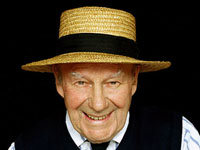
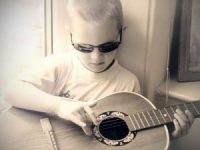
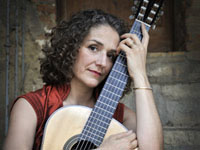
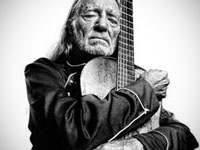
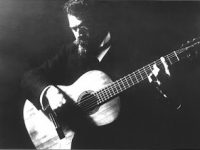
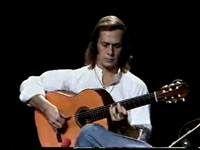

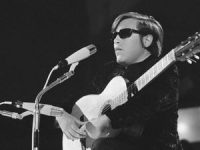

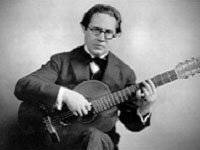
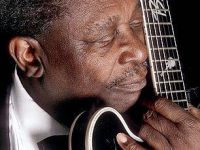


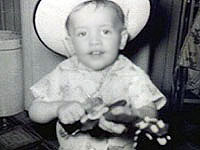
Walter Spalding died on March 4, 2004 in Tucson, Arizona, from complications of COPD and Emphysema after a long teaching and performing career.
WALTER WAS ONE OF MY TEACHERS IN FLAGSTAFF ARIZONA AND I TOOK LESSONS IN HIS HOUSE WHICH WAS LIKE AN ART MUSEUM BUT SHOWED ME PIVOTAL MOVES AND TECHNIQUES FOR FLAMENCO THAT MADE ME A MUCH BETTER MUSICIAN. HE WAS VERY SERIOUS ABOUT MUSIC LIKE A SCIENTIST. HE WAS A GREAT MASTER. AFTER READING THIS I KNOW HE WAS AN IMMORTAL GUITARIST. 424 731 6823
I am grateful for this website. Being a big fan of Rey de la Torre, I enjoy reading his thoughts on the music. He understood the heart of the music and did not just gloss through it as others do. He was true to the music and appreciated and understood every note in a piece.Thanks for the oportunity to read this conversation of Rey de la Torre with Walter Spalding.
Marcella
Pingback: Julian Bream – Homenaje pour le Tombeau de Debussy by Manuel de Falla « Pule Thamex Music 'n' Stuff
Pingback: Marco Sartor | (Yet More) Thoughts on De Falla’s Homage to Debussy
Thank you for the information about the Homage.May the spirit of Jose live.
Be blessed,
D.H.